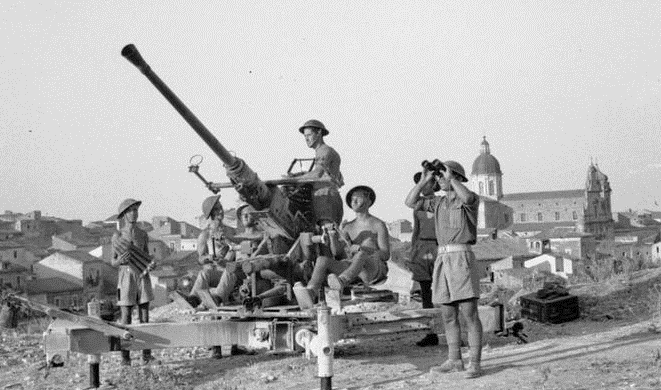
| Year | April 1937 |
| Weapon Type | Light Anti-Aircraft Gun |
| Origin & Designer | Britain/Royal Ordinance |
| Numbers Produced | 2.100 |
| Crew | 8 |
| Calibre | 40mm (40x311R) |
| Elevation | -11° to +90° |
| Traverse | 360° |
| Breech | [@breech] |
| Recoil | Hydrospring |
| Gun Sight | Stiffkey |
| Gun Mount | Cruciform |
| Carriage | Four Wheeled Trailer |
| Trailers | [@trailers] |
| Gun Shield | [@gun_shield] |
| Armoured Plate | [@armoured_plate] |
| Barrel Length | 2.250mm (L/56) |
| Overall Length | 5.18m |
| Width | 4.03m |
| Height | 4.03m |
| Weight | Weight in Traction: 2.457 kg Weight in Action: 1.981 kg |
| Round Weight | 0.907 kg |
| Muzzle Velocity | 853 m/s |
| Feed | 4 Round Clip |
| Magazine Capacity | [@magazine_capacity] |
| Practical Rate of Fire | 90 r.p.m. |
| Rate of Fire | [@rate_of_fire] |
| Maximum Rate of Fire | 140 r.p.m. |
| Maximum Ceiling | 7.160m |
| Maximum Ground Range | 9.830m |
| Maximum Range | [@maximum_range] |
| Armour Penetration | [@armour_penetration] |
| Traction | Motorized (Morris CDSW Tractor) |
| Variants | [@variants] |
| Notes | The Swedish Bofors was used by a host of European nations during World War Two, the British soon followed suite and bought over 200 pre-war. Soon they bought a license to produce their own and adding a few modifications. It was the standard light anti-aircraft gun found in every infantry and armoured division. With 54 issued to every LAA regiment by 1943. |